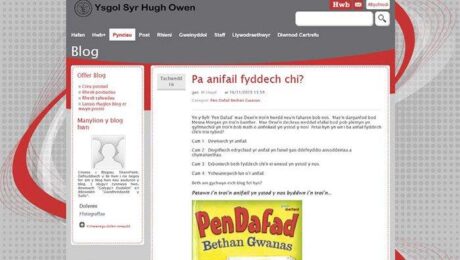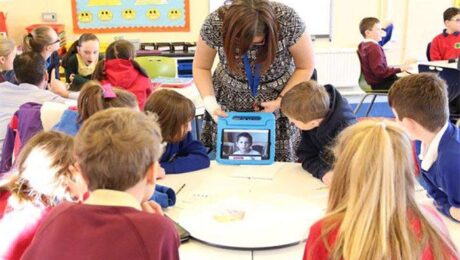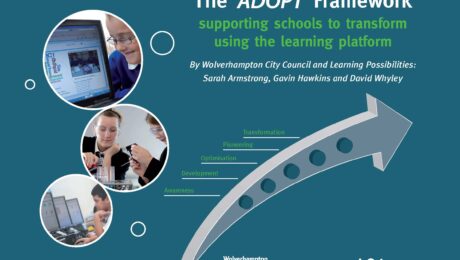Independent Evaluation of the Learning Platform LP+
Professor Don Passey from the University of Lancaster undertook independent research into the implementation and usage of the LP+365 learning platform in 72 schools in Wolverhampton.
The research gave a summary of the project, its key outcomes and also calculates the cost benefits and return on investment of the LP+ platform.
You can ready a copy of his full report here and also summary of his slides here.
He concluded that the LP+ platform helped children from a nursery age, hard to reach writers and parental engagement. Critically it also builds key digital skills.
- Published in LP365
Using Learning Management Systems to Improve Student Engagement.
- Published in Articles, Uncategorized
Using Hwb+ to develop literacy and use of the Welsh Language.
- Published in Articles, HWB+, Uncategorized
Enhancing curriculum based learning with Hwb+
- Published in Articles, HWB+, Uncategorized
Can networks like Hwb Plus help to improve teaching
- Published in Articles, HWB+, Uncategorized
Cadoxton flies flag for Welsh digital learning revolution.
- Published in Articles, HWB+, Uncategorized
The ADOPT Framework
In 2010 Learning Possibilities published the award winning ADOPT Framework, authored by Professor Stephen Heppell, Sarah Armstrong, Director of Education at Learning Possibilities, and a team from Wolverhampton City Council.
ADOPT received immediate recognition, and was selected as the UK’s National Learning Platform Adoption Model, by the UK Department for Education. The Company also won the prestigious BETT award that year.
ADOPT is an acronym for a 5-stage model (Awareness, Development, Optimisation, Pioneering and Transformation) defining the adoption of LP+365 and its associated Microsoft technologies in the classroom. This helps teachers and school identify where they are in their journey and what their next steps should be. ADOPT and the LP+ Platform have been used by millions of learners since its publication.
ADOPT was used by the Government for its National Project in Wales, and you can download of copy of the ADOPT Framework used in Wales.
ADOPT is the culmination of a 10 year journey to understand how technologies can be used to drive adoption and cater to the needs of educators and learners across many countries in the world. Independent research shows that using the LP+ Platform builds communication and collaboration skills, as well as engaging hard to reach learners.
- Published in Adopt Framework, HWB+
Why pilot the LP+365 FREE App?
Back in 1965 Gordon Moore, who was a co-founder of Intel, noted that the number of transistors per square inch on a circuit board had doubled every year since the integrated circuit was invented. Moore predicted that this trend would continue. As I look back on my (more than!) three decades of mixing new technology into the recipe for great learning I can see the impact of Moore’s Law right away. For example when my eldest daughter Juliette left her primary school at 11 I noted down every item of computer technology in that school. Ten years later as she emerged from undergraduate life (to become a teacher, of course) I could see that by then the tiny phone in her pocket outperformed her entire primary school’s technology provision from a decade earlier. A whole school network disappearing into a pupil pocket every decade. Wow. Moore’s Law predicted more power, and it delivered.
But the other side of that coin is that as the years progress you might alternatively enjoy the same power, but for a lot less money. The smart phone in your pocket could be replaced each year by one dramatically more powerful, or it might instead be purchased new for a lot less money as it is superseded by new models. Cheaper and cheaper, and cheaper yet.
Moore’s Law’s more bangs for less bucks bonus has been a constant throughout my teaching life. When we first connected children together with electronic mail and teletext (Prestel and Telecom Gold, to be precise) in the 1980s, the gateway that allowed their electronic mail writing to appear on the clunky but colourful Prestel screens cost us about £100,000 to set up (and in the 1980s £100,000 was a huge amount of money). Today’s users take for granted the effortless integration of text and media, the tiny scale of their devices, the ubiquitous connectivity of their lives, the free wifi in McDonalds and on trains. The other day someone asked me why they should try out our LP+365 free app, with its personalised dashboards, easy to use assignments tool, instant access to Word, Class Notebook, PowerPoint, with its professional development articles and lesson plans. I guess the right answer, as Chairman of Learning Possibilities would be to point to the pilot’s Free provisioning for a whole class of 35 users (2 x staff and 33 x students), but instead I wanted just to shout out “BECAUSE IT IS AN AMAZING AMOUNT OF POWER FOR FREE AND NOT VERY LONG AGO IT WOULD HAVE COST A FLIPPIN FORTUNE!!” Sometimes, having a sense of history leaves me a bit overexcited!
- Published in Articles, Uncategorized








